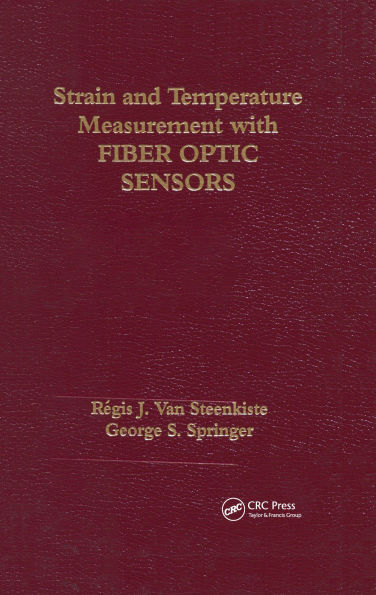Sensors operating on interferometric principles and mounted inside optical fibers have recently been considered for measuring strain and temperature. Indeed, such sensors have successfully been employed for measuring pressure or temperature in fluids. Fiber optics sensors are especially adept for such measurements because sensors immersed in fluids can easily be calibrated by tests.
Unfortunately, the use of fiber optic sensors inside solids is not as straightforward. Owing to the complex interactions between the sensor and the surrounding material, the relationship between the sensor output and the parameters of interest, namely the strain and temperature inside the material, cannot be determined by simple tests. And without the appropriate relationships, fiber optic sensors do not provide meaningful information. In general, the relationship providing the bridge between the sensor output and the engineering values of strain and temperature must be established via analytical models. The major aim of this book is to present such models for extrinsic and intrinsic Fabry-Perot sensors and for Bragg grating sensors embedded in or mounted on the surface of isotropic or anisotropic solids or immersed in fluids.
The scope of the book is limited to the theory of fiber optic strain and temperature sensors. Accordingly, we have taken as our starting point the demodulated sensor signals. The hardware needed to produce these signals is not discussed. It is presumed that the reader is familiar with and has access to the sensor, light source, light detector and demodulator required for generating signals which can then be analyzed and interpreted by the methods presented in the book.
The problem necessitates complex analytical developments. To assist the reader, the significant results are summarized in tables, and numerical examples are given illustrating the calculation procedures.
Sensors operating on interferometric principles and mounted inside optical fibers have recently been considered for measuring strain and temperature. Indeed, such sensors have successfully been employed for measuring pressure or temperature in fluids. Fiber optics sensors are especially adept for such measurements because sensors immersed in fluids can easily be calibrated by tests.
Unfortunately, the use of fiber optic sensors inside solids is not as straightforward. Owing to the complex interactions between the sensor and the surrounding material, the relationship between the sensor output and the parameters of interest, namely the strain and temperature inside the material, cannot be determined by simple tests. And without the appropriate relationships, fiber optic sensors do not provide meaningful information. In general, the relationship providing the bridge between the sensor output and the engineering values of strain and temperature must be established via analytical models. The major aim of this book is to present such models for extrinsic and intrinsic Fabry-Perot sensors and for Bragg grating sensors embedded in or mounted on the surface of isotropic or anisotropic solids or immersed in fluids.
The scope of the book is limited to the theory of fiber optic strain and temperature sensors. Accordingly, we have taken as our starting point the demodulated sensor signals. The hardware needed to produce these signals is not discussed. It is presumed that the reader is familiar with and has access to the sensor, light source, light detector and demodulator required for generating signals which can then be analyzed and interpreted by the methods presented in the book.
The problem necessitates complex analytical developments. To assist the reader, the significant results are summarized in tables, and numerical examples are given illustrating the calculation procedures.

Strain and Temperature Measurement with Fiber Optic Sensors
294
Strain and Temperature Measurement with Fiber Optic Sensors
294Related collections and offers

